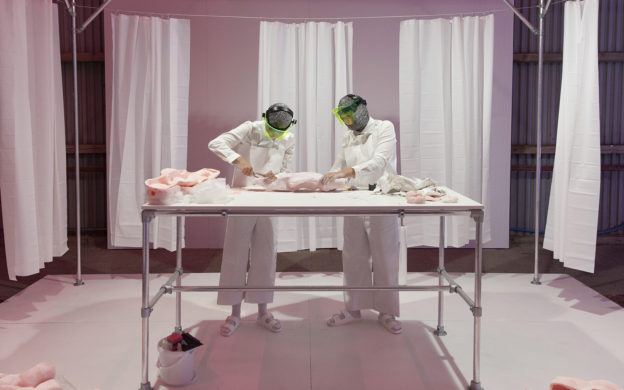London-based Dutch artist Pleun Van Dijk describes herself as a “researching artist;” someone who explores the world around her through observation, experimentation, and analysis that is then reflected in her multimedia work.
As an exchange student at the Royal Danish Academy of Fine Arts, Denmark felt like home to her; this tender feeling has followed her ever since. Pleun has collaborated with Roskilde Festival on the “Human/Non-human” exhibition. She also staged a performance called “Replika” where visitors could watch how performers continuously repeated the same movements while working on a human production line.
Through various artistic mediums, Pleun tackles important issues such as body positivity, beauty standards, skin perfectionism, sex, and youth.
We spoke with Pleun Van Dijk about her connection to Denmark, her work at Roskilde Festival, and what inspires her:
Tell us about yourself, your connection to Denmark and/or Scandinavia, and the Roskilde project.
My fascination for the rapidly changing world around me is endless. By analysing and observing moments of transition, I try to generate new thoughts and thereby show a different perspective on a topic. Although my inspiration sources are very diverse, the main focus ever since my graduation from Design Academy Eindhoven in 2016 has revolved around the question: “What does it mean to be human?”
I lived in Copenhagen for a year when I went on my exchange to the Royal Danish Academy of Fine Arts, School of Design. I have always been attracted to the north and Denmark made me feel at home from the first day onwards.
This feeling hasn’t changed over the years and is one of the reasons why it was so great when Roskilde Festival invited me to join their exhibition. It’s an honor to present my work in Denmark, and an exceptional chance to develop and execute a new concept.
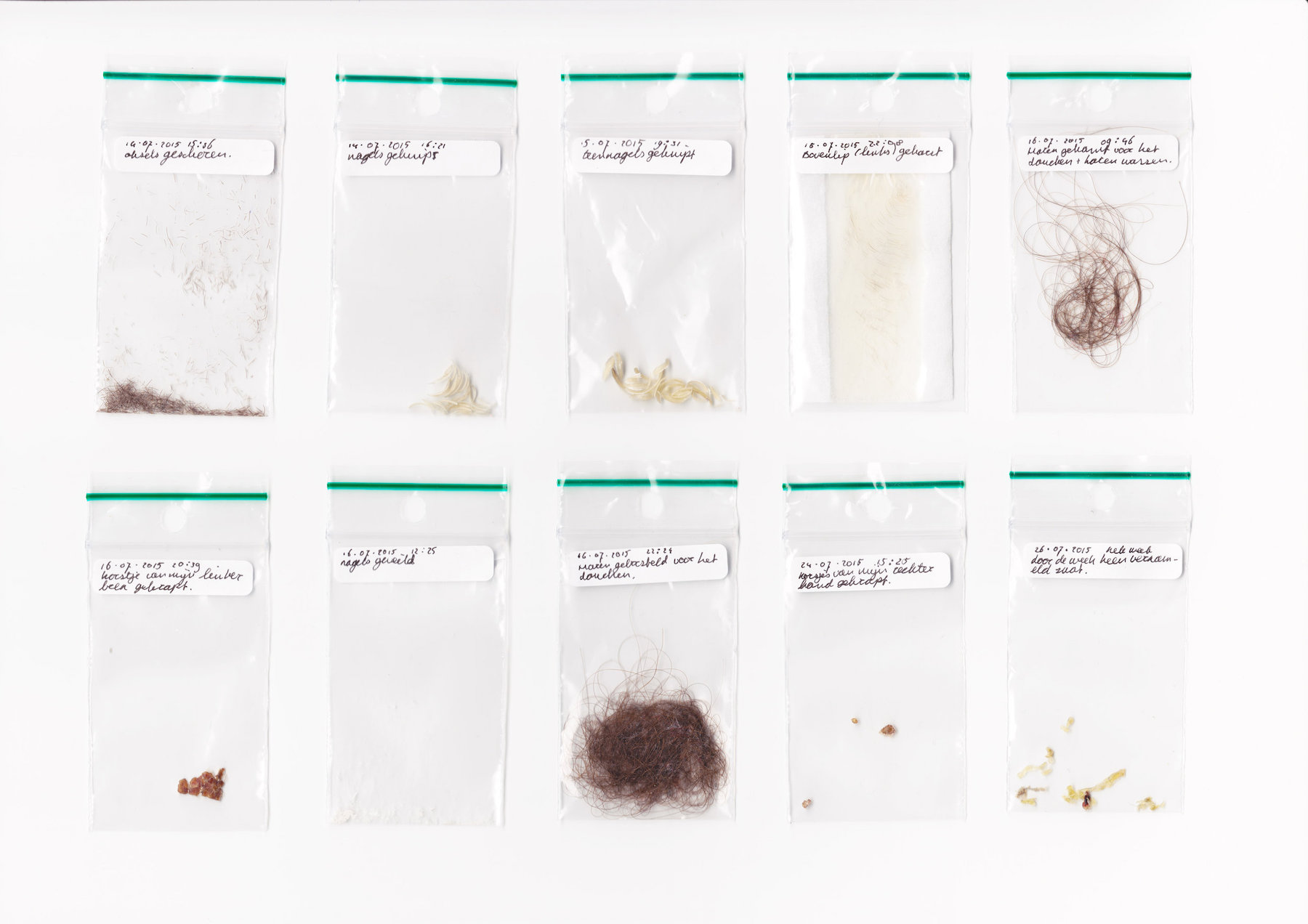
You work in different mediums; how do you choose the medium for the project
Coming from a multidisciplinary background, I’m always eager to discover new mediums and tools. I enjoy the freedom to work in different fields, which allows me to choose the medium that communicates the new concept in the best possible way. In some cases, the story is best told through a video. In others, I give the audience a more comprehensive experience with an interactive installation.
Who or what inspires your work? What are you challenges and joys in the creative process?
I consider it important to be present. That’s more difficult than it might seem, since we are part of a world changing so rapidly that we almost can’t keep up with it. Before placing my work in context, I find it important to understand the world around me and ground my thoughts. I try to conceptualize the “now” by analyzing and observing moments of transition within society.

After investigating the new developments, I take them a step further into the future and transform them into a speculative scenario. By taking new thoughts out of the abstract and shaping a possible (or impossible) outcome, I hope to give the viewer the opportunity to anticipate these new developments.
Going through a creative process is wonderful but also full of unexpected challenges. One of the most difficult, as well as amazing, parts is to create something out of nothing. Some projects start with a given set of guidelines, others are completely open. You have to jump in the water and make sure you don’t drown.
An idea never suddenly occurs to me: I need in-depth research. I need to plant a seed and create a context for the concept to grow. That first phase is one of my favorite parts because it allows me to discover and explore unknown grounds.
To translate the concept into a visual piece is the next big challenge in this process. It’s something I’m still struggling with. I want to express everything in one project, but every time I realise the impossibility of this desire.
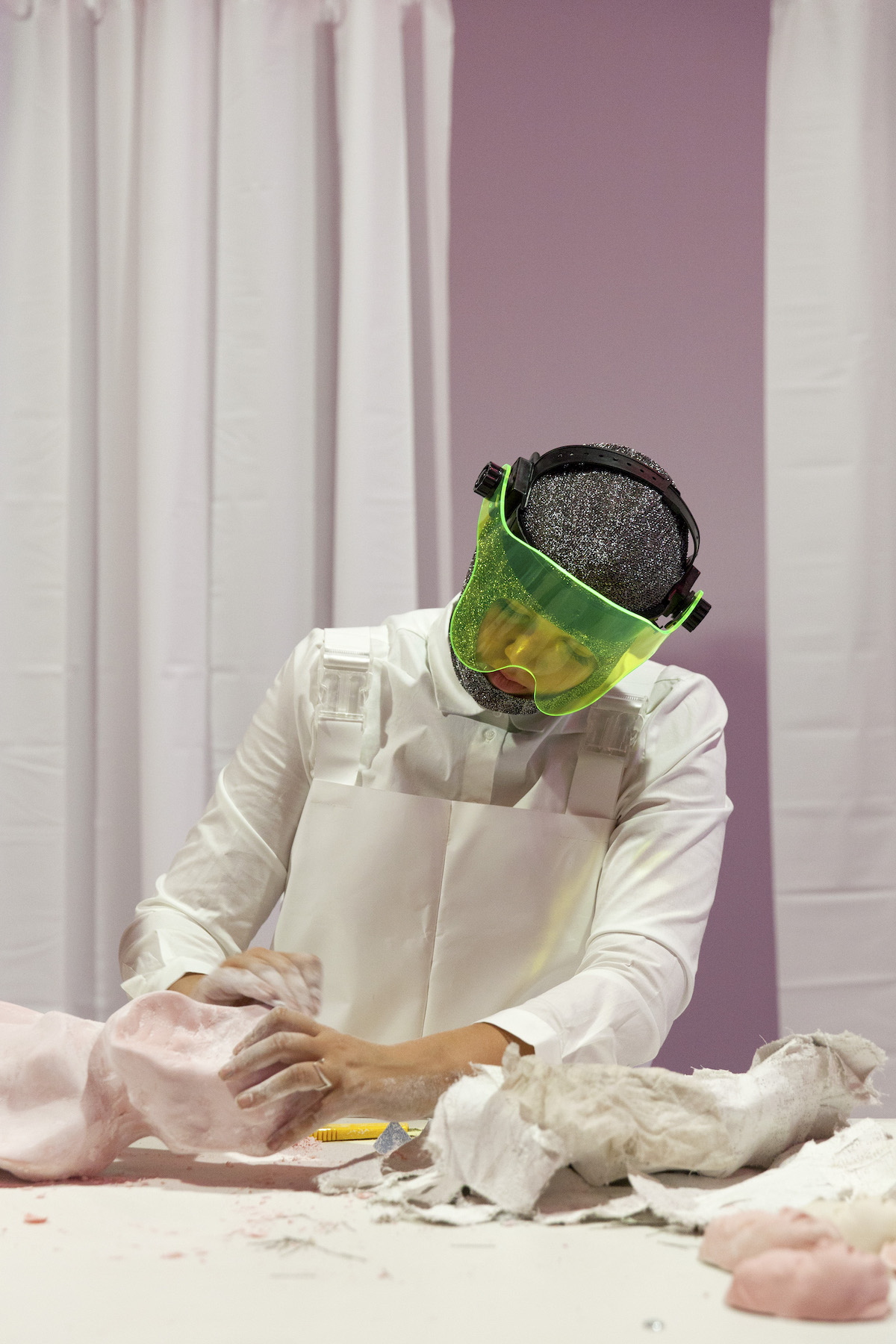 |
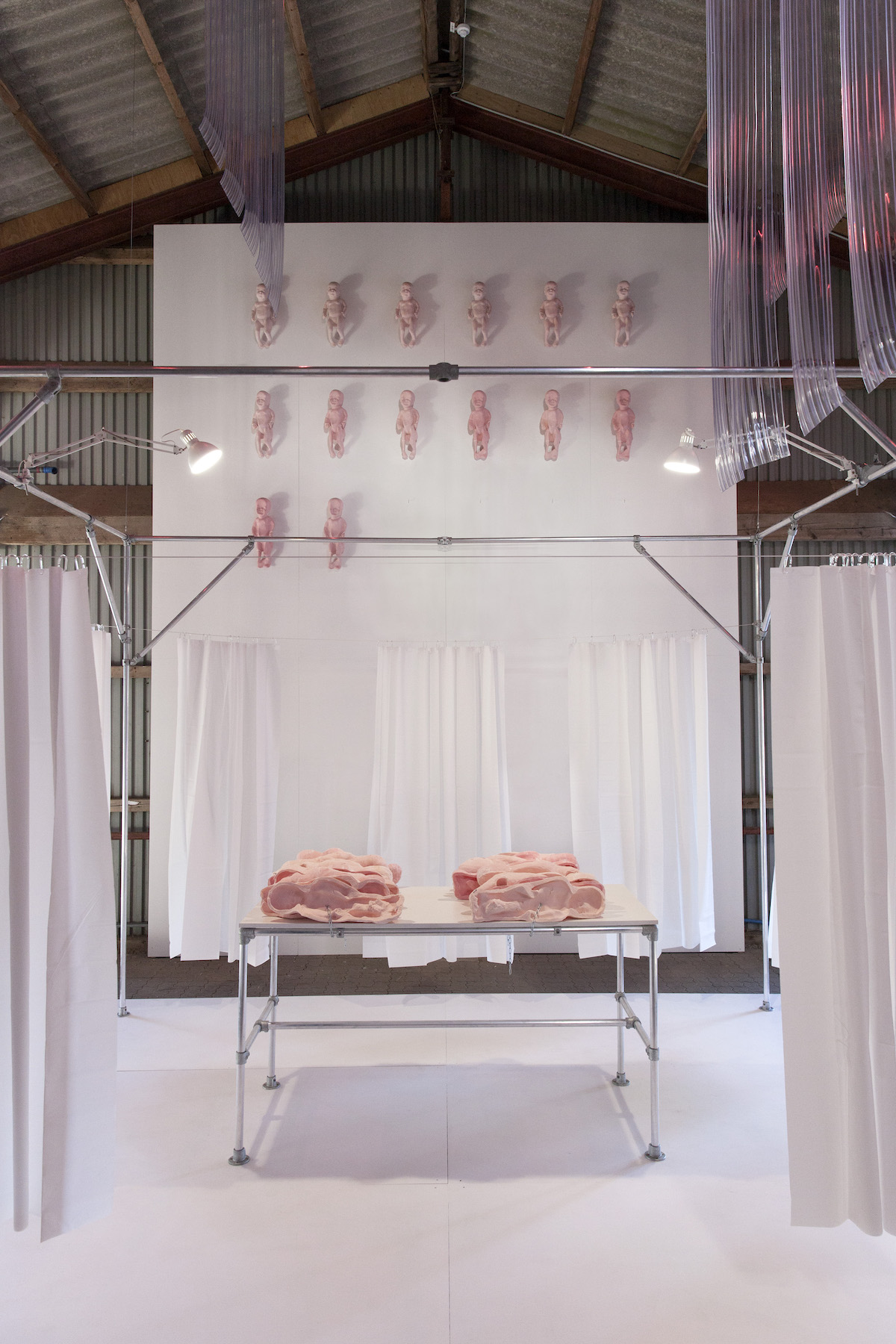 |
Your project “The Body Garden” deals with the investigation of the human body waste. What does the body waste reveal about people?
In “The Body Garden,” I’ve researched different perspectives by collecting my own body materials for a month. Then I went into a lab to extract what normally stays hidden. Every day we are being exposed to an almost endless stream of photos and images of clean and polished bodies, stripped of anything that might make it look grotesque. This gives us the illusion of a finished and controllable body, but that’s not reality.
The human body is in a constant state of renovation. Everything that lost its function will be pushed off, therefore we constantly shed skin, hair, saliva, snot, and sweat.. With “The Body Garden” I explored the potential of the body becoming a garden. We mainly see our leftovers as a valueless waste material. Would this still be the same in a context where we lack of natural resources; for example, on Mars? What is the regenerative potential of growth on our body?
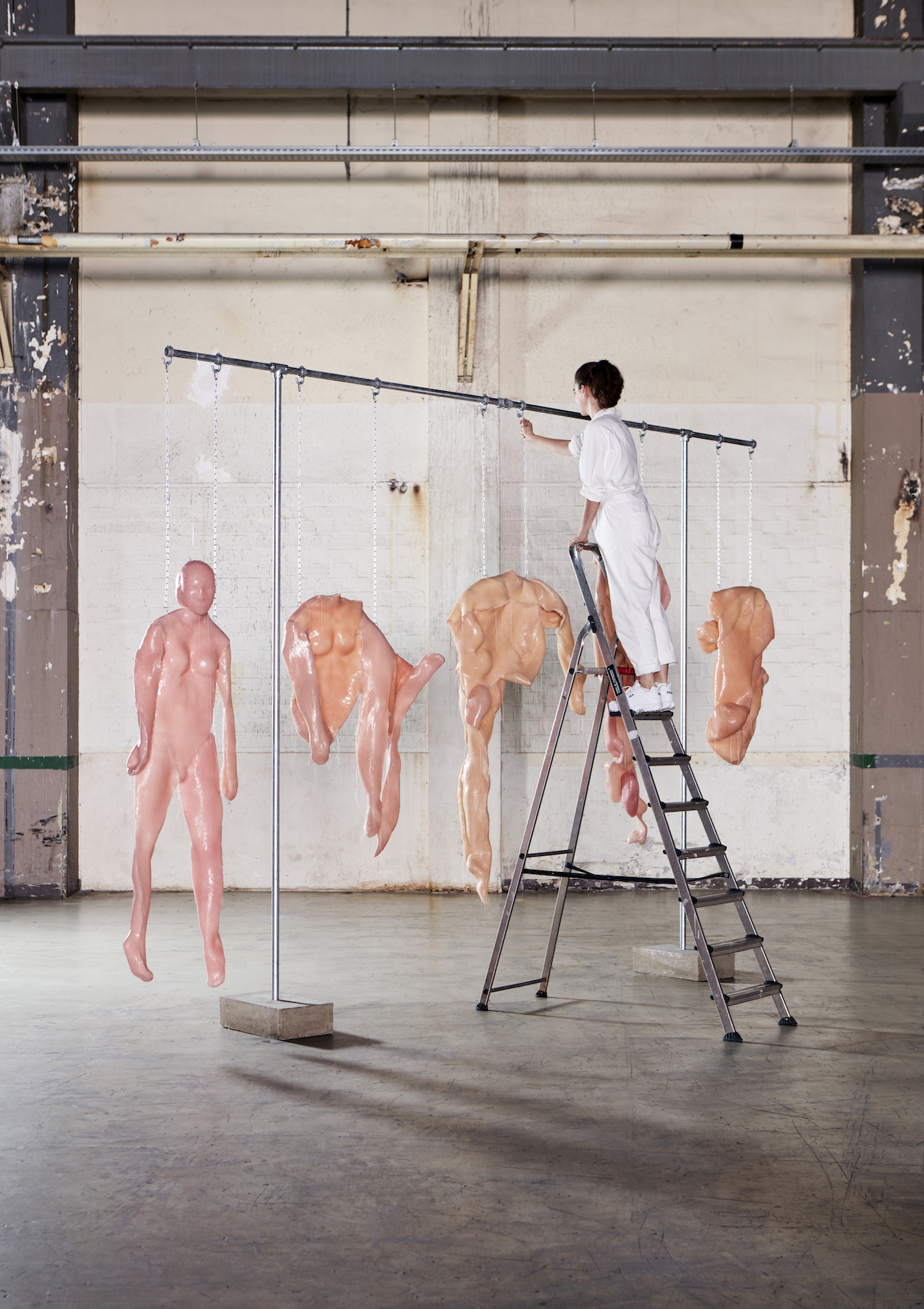
How do you feel about body-based propaganda? How can we oppose the fashioning of the body?
We are constantly confronted with the desire for perfection and the idea that youthfulness is superior. We can’t stop the process and we also can’t escape it. The main thing we can do is question it.
The “perfect human” only exists in the context of the “normal human.” Whenever the “perfect” becomes the new “normal” our desires change to match it. The dream for perfection will be a never-ending one.
In “Transcience” you say: “pleasure is the new norm” and “the definition of sexuality is often being mixed up with sexiness.” Can you discuss further?
The social relationship between sex and reproduction has changed. First there was sex without reproduction it now we’re shifting towards reproduction without sex. We don’t have sex with procreation as the main result and therefore the focus is on pleasure.
We often mix up sexuality with sexiness, where sexiness is more focused on the beauty standards of our visual appearance. Sexuality expresses the experience, feelings, and stimulations from the inside out.
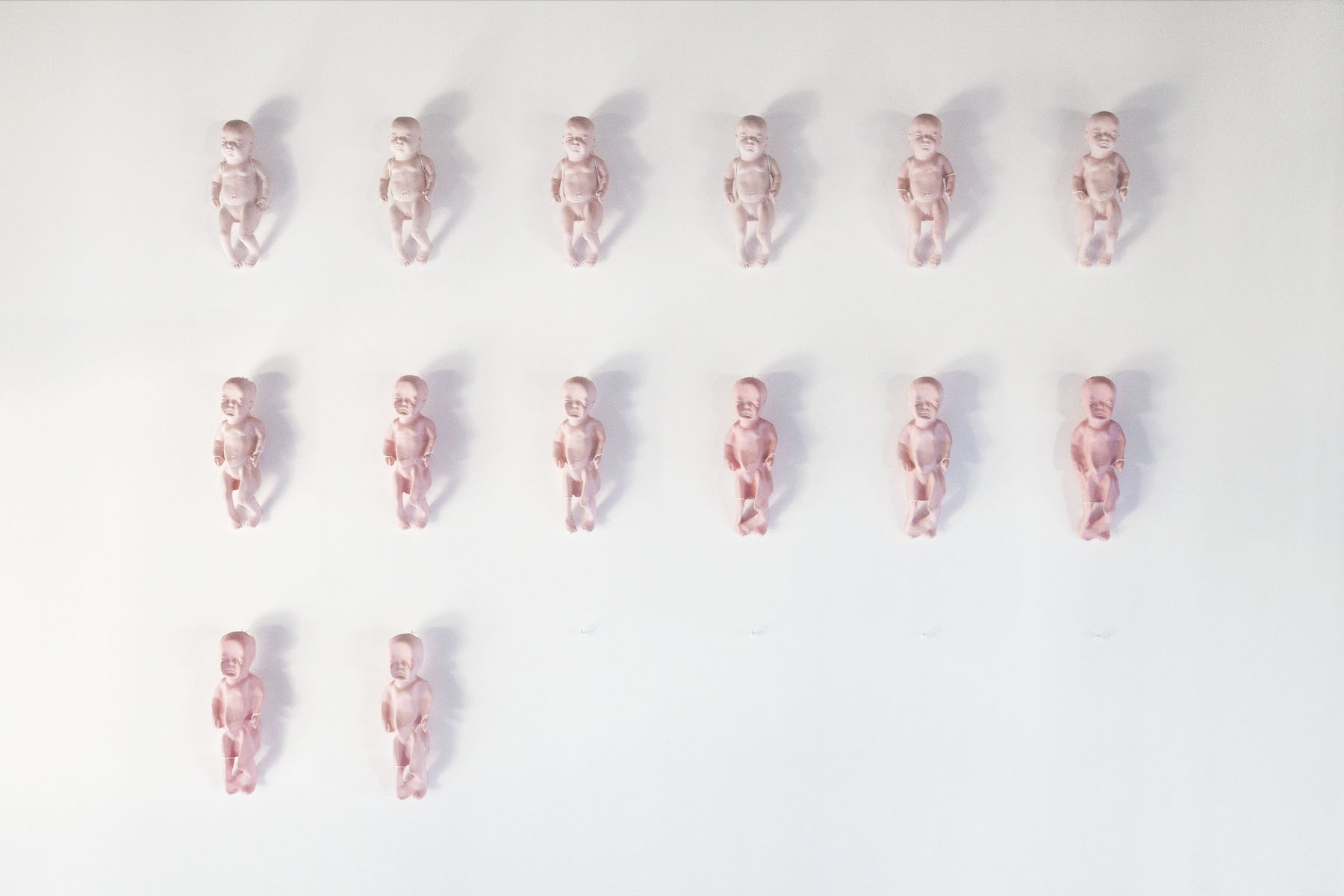
In your project “Reborn,” you questioned if we are capable of reconstructing ourselves. What were your conclusions?
“Reborn” is one of the two graduation projects I did at Design Academy Eindhoven. I explored if our idea of evolution still fits in modern society. This resulted in a series of five sculptures as well as a written thesis.
The word “evolution” is often connected to the idea of improvement. In my opinion, this is a questionable way of thinking. We are so eager to move forward, but there is no progress, there is not even deterioration. There is only change.
We often forget that we are not an end result of evolution but just a phase in between what we have been so far and what we will become in the future. By deconstructing and reconstructing the human body I wanted to show the possibilities of the human as a modular system. This gives us the opportunity to anticipate new developments before they sneak into our lives.

How do you envision humans in the future?
A relevant, interesting, but impossible question! What we can say is that the scientific and technological developments are going so rapidly that it’s almost impossible to stop them.
According the story of Icarus, we shouldn’t fly too high and shouldn’t fly too low. The solution to a problem is fundamental to improvement but has often more consequences than the solution it solved. That’s why I think we have to discuss the possible outcomes and effects on society before scientific development is proceeded.
So even though it’s impossible to fully envision the effect of our alterations in the long term, I consider it to be important to discuss. We need to decide what we want and carry responsibility for the generations to come. Artists and designers can help us to comprehend the new developments by transforming them into speculative future scenarios.
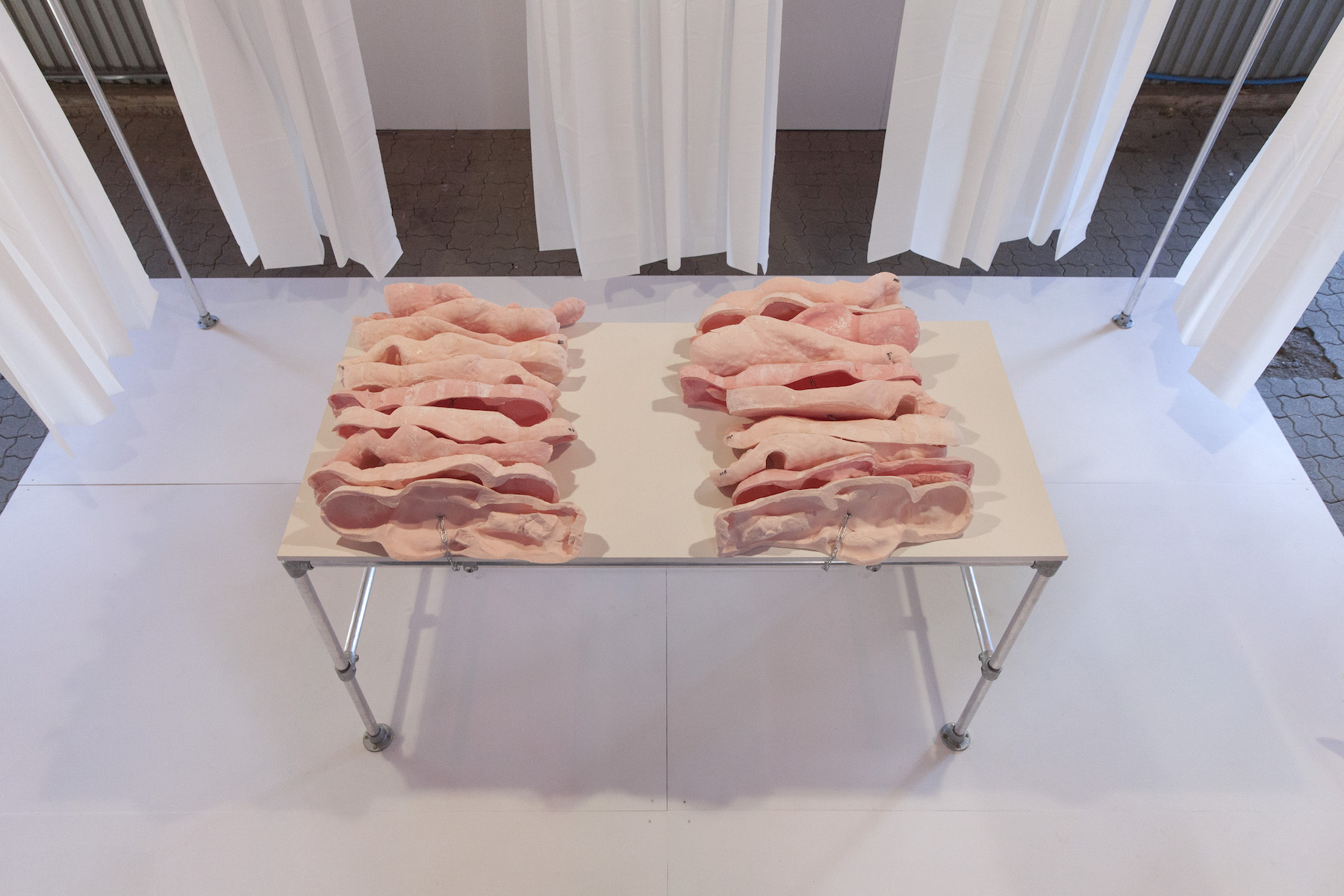
What message were you trying to convey with your Roskilde Festival “Replika” performance?
About a year ago I was asked to create a new work for the “Human/Non-human” exhibition at the art zone of Roskilde Festival. It was a beautiful chance to go back to Denmark, experience this amazing festival and create a new work. It was a unique opportunity to get not only a good platform to present in, but also a budget to develop the piece with the guidance of a personal curator.
In “Replika – staging a human production line” I continued on the topic of human evolution and focused on the idea that every little change we make will have a huge impact over a long period of time. Starting from a realistic representation of a human baby, I looked at evolution as being “a copy of a copy of a copy.”
I designed the process not knowing what the exact outcome would be. Small variations between the first two sculptures could lead to a large mutation further on in the production line. “Replika” is an ongoing project; the last sculpture will never really be the last one.
See more of Pleun Van Dijk’s work on her website and Instagram.

